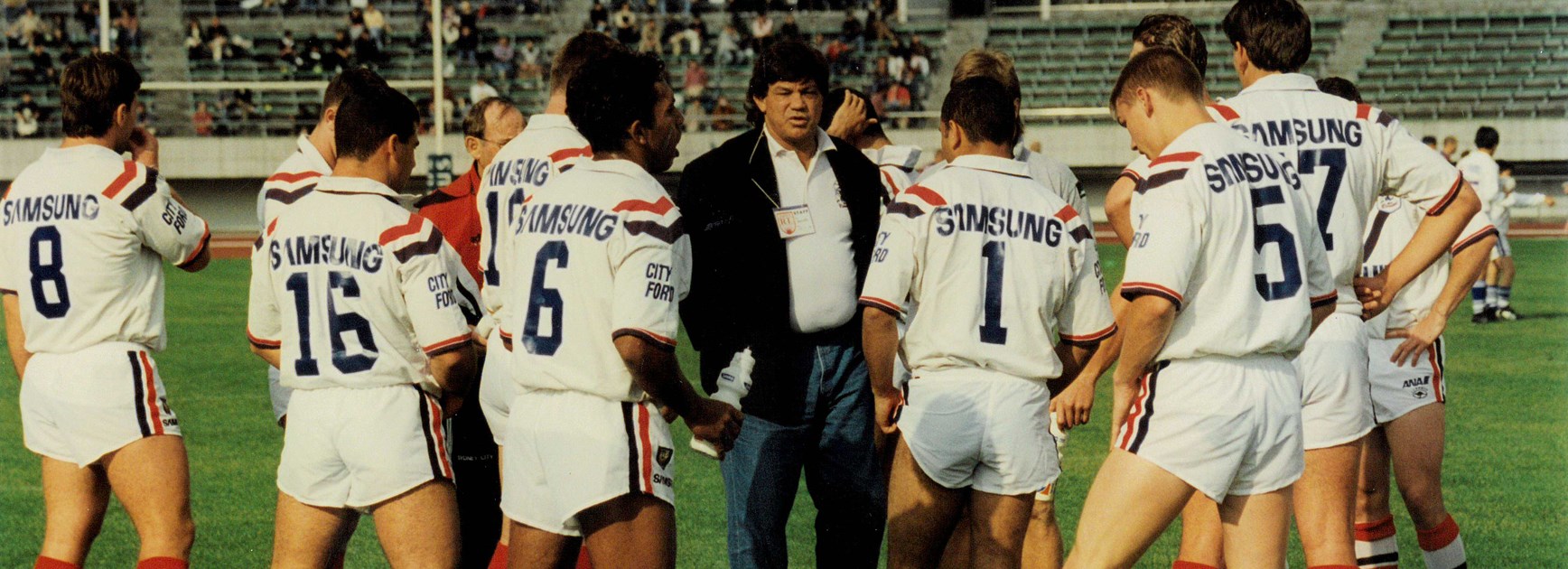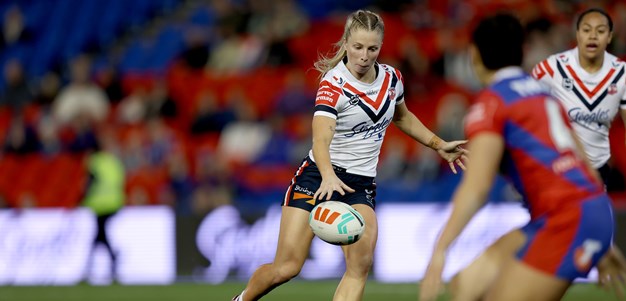
There is a certain pride at the Sydney Roosters when it comes to innovation and forward-thinking; from Dally Messenger joining the fledging code to introducing front of jersey sponsorship, the Club has always been looking to revolutionise the game of Rugby League - but few know about the Tricolours’ trip to Tokyo in late 1996.
With the game in the midst of the Super League war that would have overbearing ramifications over the following two decades, the Roosters set themselves on venturing to the Land of the Rising Sun in a bid to spread the good word in an exhibition match against rivals Manly-Warringah at Komazawa Olympic Stadium.
Former CEO and then-General Manager of Football Brian Canavan recalls the trip, which saw a fledgling side take home the ‘Revolution Cup’ in a 34-30 victory against the more fancied Silvertails.
“We were very settled as a Club, so we weren’t confused about the Australian Rugby League vs Super League, we just marched on under the leadership of Nick Politis,” Canavan recalled.
“But Rugby League was not in a pleasant extended work environment, because there was a lot of issues. The game was confused as to which way it was going.
It was my first time wearing the Roosters colours in a first-grade environment and to be coached by Artie was something special. It was a huge memory for me.
Simon Bonetti Former Roosters Hooker
“One of the things about our game is that while it has a small international exposure, it is very intriguing to international sports lovers and regarded as one of the toughest sports in the world so it was decided to have an exhibition game to promote Rugby League in Japan with two of the leading clubs at the time."
Canavan also detailed the cultural adjustment the touring group had to make; from claustrophobic bathrooms and stand-still traffic to the lack of value in the Australian dollar at the time - which of course made the trip all the more memorable.
“Myself, Bernie Gurr (CEO) and Michael Conn (Deputy Chairman) went. Arthur Beetson came as Head Coach with Ronnie Palmer (Head Trainer) while Phil Gould stayed in Australia. Poor Artie got culture shock and wanted to come home as soon as we got there,” he laughed.
“We were in a very nice hotel, it was five-star but the rooms were tiny! Arthur could hardly get in the shower it was so small. Michael bought a pizza and it cost him $54 Australian and he ended up with one tiny sliver for himself. I bought an apple and it cost me $8.
“It took us nearly three hours to get from our hotel to the training venue, because of the lack of grass and fields around the central parts of Toyko as well as the traffic.”
There there was an adjustment period to the demands of the cultural metropolis, the trip handed an opportunity to up-and-coming juniors Simon Bonetti and Peter Cusack to experience the rigours of first-grade football against the ARL's reigning premiers.
For a nineteen-year-old Bonetti, a whirlwind year saw him on a tour to Fiji with the Junior Kangaroos, uproot himself from his hometown of Griffith to the big smoke in Sydney before flying out to Tokyo in the span of two months.
The trip to Japan, though, remains an experience he reminisces on over two decades later - and one he says helped him carve out his career in the Club's famous colours.
“I finally made the decision after playing with the Junior Kangaroos that year to decide to give first-grade a real go," Bonetti explained.
"I had only been training for about three weeks with the Club, and with Sean Garlick and a few of the other hookers injured, they tapped me on the shoulder and asked if I wanted to go to Japan. I was a bit overawed with it all.
I remember going out for dinners and being younger, we weren’t really sure what we could and couldn’t do. You wanted to show that you were keen to do the right thing and get that opportunity to play first grade.
Peter Cusack Former Roosters Prop
“Some of the younger guys I had a lot to do with like Scott Logan, Dallas Hood and Peter Cusack were going, so I put my hand up to go. It was quite surreal really.
“It was my first time wearing the Roosters colours in a first-grade environment and to be coached by Artie was something special. It was a huge memory for me.
“He was great with everyone, but especially the guys who he helped get there – which was a lot of us anyway – especially the country kids."
Front rower Peter Cusack - then also just nineteen years of age - spoke glowingly of the experience, citing the chance to not only impress teammates and coaches at the top level but to experience a culture far removed from that of Australia.
“The Club sent a mix of first-graders and juniors coming through the ranks as a reward for our hard work,” Cusack said.
“I remember going out for dinners and being younger, we weren’t really sure what we could and couldn’t do. You wanted to show that you were keen to do the right thing and get that opportunity to play first grade.
“We ended up playing at the stadium where the Olympics were held in 1964. The plane trips were pretty eventful too because we actually shared the same flight with the Sea Eagles.
“We didn’t take it as seriously as a club match, and I don’t know if Manly did or not, but we ended up winning the game. We had a few younger enthusiastic boys who belted some of them and they weren’t too happy about it since they had pretty much taken their Grand Final side.
“It was a massive surprise getting us to go. That was the first time going overseas for me, so it was an unreal opportunity to experience the city of Tokyo itself and to see how it was compared to Sydney.”
While it has been over 25 years since the Club's revolutionary trip to Tokyo, as the world continues to return to normality and with air travel returning, who knows - the Roosters very well could crow once again away from home.







